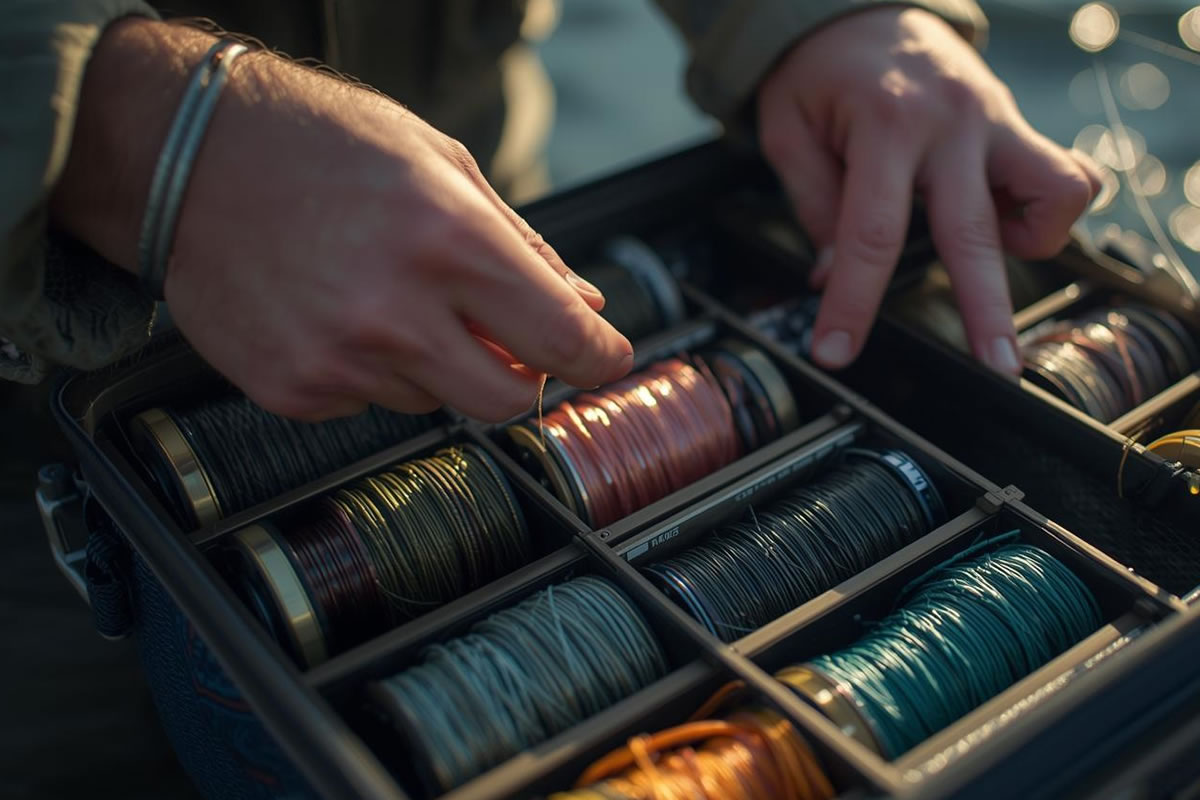
Fishing may look simple from the shore, but seasoned anglers know that success often depends on the smallest details. One of the most overlooked yet most important pieces of gear is the fishing line. It connects you to the fish, transmits the slightest nibble, and withstands the fight when a trophy is on the line. Yet many beginners (and even some experienced anglers) grab the first spool they see on the store shelf without realising how much the choice of line affects their results.
In this guide, we’ll break down the types of fishing line, their strengths and weaknesses, and how to choose the right one for your target species and fishing conditions.
Why Fishing Line Matters
Think of fishing line as the lifeline between you and the fish. The rod and reel may be flashy, but without the right line, they’re almost useless. The wrong line can snap under pressure, spook wary fish, or make casting a frustrating chore. A properly chosen line, on the other hand, improves casting distance, increases sensitivity, and gives you confidence when reeling in a stubborn catch.
The Three Main Types of Fishing Line
While there are speciality lines, almost every angler chooses between three main categories: monofilament, fluorocarbon, and braided line. Each has unique characteristics, and understanding these will help you make the right choice.
1. Monofilament (Mono)
Overview:
Monofilament is the classic fishing line most people start with. Made from a single strand of nylon, it’s affordable, easy to use, and widely available.
Pros:
-
Affordable and easy to find
-
Stretch provides forgiveness, reducing the chance of breaking when a fish strikes hard
-
Easy to tie knots with
-
Floats well, making it suitable for topwater lures
Cons:
-
Less sensitive because of its stretch
-
Weaker for its diameter compared to braid or fluoro
-
Prone to UV damage over time
Best For:
Beginners, casual anglers, and techniques that require stretch, such as crankbait fishing.
2. Fluorocarbon
Overview:
Fluorocarbon is made from a denser material that’s nearly invisible underwater, making it excellent for clear-water fishing.
Pros:
-
Virtually invisible in water
-
Abrasion-resistant, making it great around rocks and cover
-
Sinks, which is useful for bottom presentations
-
More sensitive than mono
Cons:
-
More expensive than mono
-
Stiffer, making knots trickier
-
Less forgiving because of reduced stretch
Best For:
Clear water conditions, finesse fishing, and situations where fish are line-shy.
3. Braided Line (Braid)
Overview:
Braided line is made by weaving together strands of synthetic fibres, creating a thin yet incredibly strong line.
Pros:
-
Extremely strong for its diameter
-
No stretch, allowing maximum sensitivity
-
Excellent casting distance
-
Lasts longer than mono or fluoro
Cons:
-
Very visible in clear water (often needs a fluorocarbon leader)
-
Slippery, requiring careful knot tying
-
Can dig into reel spool if not spooled properly
Best For:
Heavy cover, deep water, and when targeting large, powerful fish like bass, pike, or saltwater species.
Choosing Line Strength (Pound Test)
Line strength, or pound test, refers to how much weight the line can handle before breaking. Choosing the right strength depends on your target species, fishing environment, and style.
General Guidelines:
-
Panfish & Trout: 2–6 lb test
-
Bass & Walleye: 8–12 lb test
-
Pike & Musky: 15–30 lb test
-
Saltwater Inshore: 20–30 lb test
-
Offshore Big Game: 50+ lb test
Remember, lighter line gives better casting distance and stealth, while heavier line provides more power and durability. It’s often about balancing stealth with strength.
Matching Line to Fishing Conditions
The right fishing line isn’t just about species – it’s about where and how you’re fishing.
-
Clear Water: Fluorocarbon is king because it’s nearly invisible.
-
Heavy Cover (weeds, timber, docks): Braided line’s strength helps cut through vegetation.
-
Topwater Fishing: Monofilament floats, making it ideal for lures like poppers and frogs.
-
Deep Water: Braid with a fluorocarbon leader combines strength, sensitivity, and stealth.
Knots and Leaders
Your fishing line is only as strong as the knot that holds it. Some lines, like braid, require specific knots (such as the Palomar knot or improved clinch knot) to stay secure. Many anglers also use leaders, short sections of fluorocarbon or mono tied to braid, to combine the advantages of different lines. For example, braid for strength and sensitivity, with a fluoro leader for invisibility.
Common Mistakes to Avoid
-
Using old line: Fishing line deteriorates over time. Sunlight, water, and stress all weaken it. Replace your line regularly.
-
Choosing the wrong line for the lure: For example, using heavy braid for finesse fishing can spook fish.
-
Not checking abrasion: Rocks, logs, and even fish teeth can damage your line. Run your fingers along it often and re-tie if needed.
-
Improper spooling: Overfilling or underfilling your reel with line can cause tangles and poor casting.
Tips for Beginners
-
If you’re just starting out, go with 8–10 lb monofilament. It’s versatile, forgiving, and inexpensive.
-
As you gain experience, experiment with braid and fluorocarbon to suit different techniques.
-
Don’t be afraid to mix and match. Many experienced anglers spool braid with a fluorocarbon leader for the best of both worlds.
Final Thoughts
Choosing the right fishing line doesn’t have to be complicated, but it does require a bit of thought. The best line for you depends on your target fish, water conditions, and style of fishing. For beginners, monofilament is a great starting point. As you grow more experienced, adding fluorocarbon and braid to your arsenal will make you more versatile and successful.
At the end of the day, fishing is about confidence. The more you trust your line, the more you’ll focus on the thrill of the strike, the fight, and the joy of landing your catch. So next time you gear up, don’t treat fishing line as an afterthought – it just might be the most important piece of tackle in your box.



